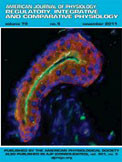Sporková A, Kopkan L, Varcabová S, Husková Z, Hwang SH, Hammock BD, Imig JD, Kramer HJ, Cervenka L. Am J Physiol Regul Integr Comp Physiol. 2011 Jun;300(6):R1468–75. Epub 2011 Mar 16. IF: 3.284

Abstract:
Department of Physiology
Alterations in renal function contribute to Goldblatt two-kidney, one-clip (2K1C) hypertension. A previous study indicated that bioavailability of cytochrome P-450 metabolites epoxyeicosatrienoic acids (EETs) is decreased while that of 20-hydroxyeicosatetraenoic acids (20-HETE) is increased in this model. We utilized the inhibitor of soluble epoxide hydrolase cis-4-[4-(3-adamantan-1-yl-ureido)-cyclohexyloxy]-benzoic acid (c-AUCB) and HET-0016, the inhibitor of 20-HETE production, to study the role of EETs and 20-HETE in the regulation of renal function. Chronic c-AUCB treatment significantly decreased systolic blood pressure (SBP) (133 ± 1 vs. 163 ± 3 mmHg) and increased sodium excretion (1.23 ± 0.10 vs. 0.59 ± 0.03 mmol/day) in 2K1C rats. HET-0016 did not affect SBP and sodium excretion. In acute experiments, renal blood flow (RBF) was decreased in 2K1C rats (5.0 ± 0.2 vs. 6.9 ± 0.2 ml·min–1·g–1). c-AUCB normalized RBF in 2K1C rats (6.5 ± 0.6 ml·min–1·g–1). HET-0016 also increased RBF in 2K1C rats (5.8 ± 0.2 ml·min–1·g–1). Although RBF and glomerular filtration rate (GFR) remained stable in normotensive rats during renalarterial pressure (RAP) reductions, both were significantly reduced at 100 mmHg RAP in 2K1C rats. c-AUCB did not improve autoregulation but increased RBF at all RAPs and shifted the pressure-natriuresis curve to the left. HET-0016-treated 2K1C rats exhibited impaired autoregulation of RBF and GFR. Our data indicate that c-AUCB displays antihypertensive properties in 2K1C hypertension that are mediated by an improvement of RBF and pressure natriuresis. While HET-0016 enhanced RBF, its anti-natriuretic effect likely prevented it from producing a blood pressure-lowering effect in the 2K1C model.
-mk-